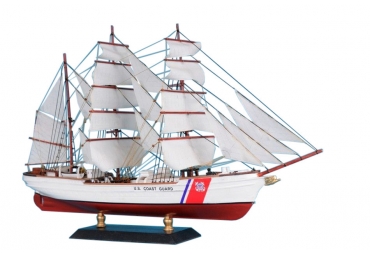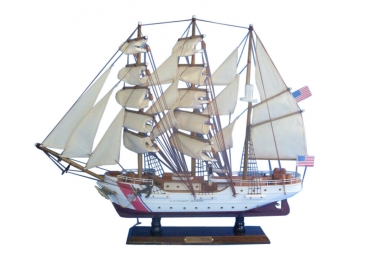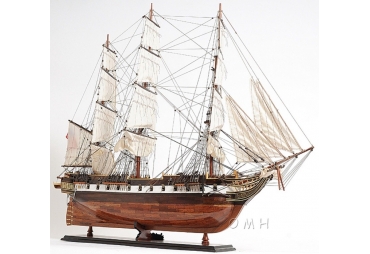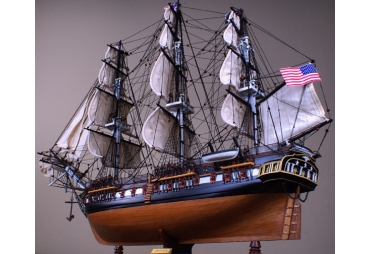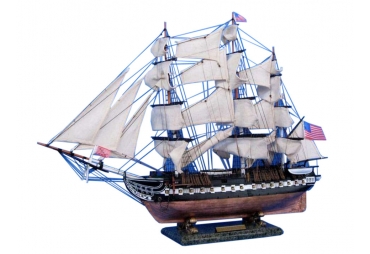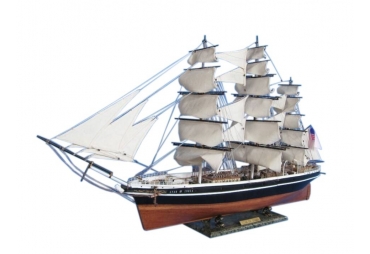Tall Ships
-
Nautical Decor
- Fish Replica
- Nautical Art Posters
- Nautical Gifts And Decor
- Collections of Tether Cars, Nautical Clocks
- Decorative Lighthouses
- Corporate Gifts
- Liferings
- Nautical Throw Pillows
- Nautical Jewelry
- Nautical Theme Framed Art
- Beach Decor Shop
- Nautical & Coastal Furniture
- Portholes
- Aviation Decor and Gifts
- Nautical Clocks
- Floats and Buoys
- Nautical Balance Toys
- Compasses
- Lanterns and Lamps
- Globes
- Decorative Sailboats
- Signs
- Spot Lights
- Keychains
- Nautical Flags
- Nautical Watches
- Sextants
- Decorative Wooden Oars & Paddles
- Ships in a Bottle
- Decorative Anchors
- Ship Wheels
- Ships Bells
- Spy Glasses
- Telescopes
- J Class Yacht Decor
- Diving Helmets
- Nautical Charts
- Seaside Treasures
- Nautical Wall Decor
- Mirrors
- Curtains Tapestry
- Weather Instruments
-
Model Ships
- Historic Ships
- J Class Sailboats
- Large Tall Ships
- RC Sailboats
- Display Cases
- Famous Ships
- Coast Guard
- Historic Sailboats
- Cruise Ships
- Fishing Boats
- Exclusive Ship Models
- Pirate Ships
- Half Hull Boat Models
- Real Kayaks and Canoes
- Ships in the Bottles
- Speed Boats
- Tall Ships
- America's Cup Sailboat Models
- Sailboats
- Custom Built Models
- Fish Replica
- Nautical Lighting
- Furniture
-
 $66 $78
$66 $78Ship's Porthole Window Chrome Finish 11"
Dimensions: L: 11in x W: 11in x H: 1in
Tall Ships There are 118 products.
Subcategories
-
Cutty Sark
The Cutty Sark is a clipper ship. Built in 1869, she served as a merchant vessel (the last clipper to be built for that purpose), and then as a training ship until being put on public display in 1954. She is preserved in dry dock at Greenwich in London, but was damaged in a fire on May 21, 2007 while undergoing extensive restoration.
-
HMS Victory
HMS Victory is a 104-gun ship of the line of the Royal Navy, built between 1759 and 1765. She is the oldest naval ship still in commission. She sits in dry dock in Portsmouth as a museum ship.
-
Pirate Ships
Pirate Ships
-
HMS Surprise
HMS Surprise was a 38-gun frigate of the Hebe Class of the Royal Navy, although all these Fifth Rate frigates were re-classed as 46-gun under the general re-rating of February 1817, from when carronades on the quarter deck and forecastle were included in the rating. She carried a complement of 284 officers and ratings, and a primary armament of 28 eighteen-pounder guns on her upper deck, with 8 nine-pounder guns (and 6 32-pounder carronades) on her quarter deck and 2 nine-pounder guns (and 2 more 32-pounder carronades) on her forecastle.
-
Sovereign of the Seas
HMS Sovereign of the Seas was a 90-gun (later 100) first rate ship of the line of the English Royal Navy. She was later renamed Sovereign, and then Royal Sovereign. The ship was launched on October 13, 1637 and served from 1638 until 1696, when a fire burned the ship to the waterline at Chatham, England.
-
USCG Eagle
As one of three sailing training ships, built in pre-World War II Germany, the USCG Eagle began her legendary career at sea as the SSS Horst Wessel. Designed by John Stanley as a Gorch Fock class cutter, a three-masted sailing barque, the ship or “Schiff” had its keel laid on February 15, 1936. Known then as ship number 508, she was launched on June 13 of that year, completed on September 16, and was commissioned the following day. Present at the launch and christening were Adolf Hitler and the Nazi politician Rudolph Hess, spectators for the ship named after Nazi party member Horst Wessel who wrote the music used in the German national anthem.
Constructed by the historic Blohm and Voss Shipyards, which had been building ships since 1877, the SSS Horst Wessel emerged at 295 feet long, weighing 1824 tons. Powered by engine and sail she operated with three masts, the main and fore masts reaching 148 feet and the mizzenmast reaching 132 feet, and a 1,000 horsepower diesel engine. With a range of approximately 5,500 nautical miles and a top speed of 17 knots, she was a spry cutter designed for speed and agility. Two full length decks and one lower platform deck were all crafted from solid steel, with a hull that was four-tenths of inch-thick. For the quarterdeck and forecastle, steel was overlaid with rich teak, three inches thick, for both strength and classic aesthetics. -
San Felipe
The San Felipe Launched in 1690, was one of the most beautiful Spanish ships of the 17th century. She was the lead ship of the Spanish Armada and displaced more than 1000 tons and was armed with 96 cannons, enabling her to take on the most formidable ships in the French and British navies. San Felipe's role in the war against the British and French was to help protect Spanish settlements and harbors, to transport treasures, and to safeguard the long and hazardous passage back to Spanish ports. In 1705, she participated in a furious and heroic battle between 12 Spanish ships and 35 British ships. After 24 hours of battle, she was captured by an English ship, but was so badly damaged that she could not be salvaged as a prize. She went to the bottom with several tons of gold.
-
HMS Bounty
In December 1787, the Bounty left England for Tahiti in the South Pacific, where it was to collect a cargo of breadfruit saplings to transport to the West Indies. There, the breadfruit would serve as food for slaves. After a 10-month journey, the Bounty arrived in Tahiti in October 1788 and remained there for more than five months. On Tahiti, the crew enjoyed an idyllic life, reveling in the comfortable climate, lush surroundings, and the famous hospitality of the Tahitians. Fletcher Christian fell in love with a Tahitian woman named Mauatua.
-
Flying Cloud
Built by Donald McKay in East Boston, Massachusetts in 1851, the Flying Cloud could be considered the fastest clipper ship of its time. Intended for the company Enoch Train of Boston, who paid $50,000 for her construction, the ship was sold prior to her actual completion to Grinnel, Minturn & Co. of New York for a sum of $90,000. Six weeks after her initial launch the Flying Cloud made headlines around the world with her record setting sail from New York to San Francisco, around South America’s Cape Horn, in 89 days, 21 hours. Commanded by Captain Josiah Perkins Creesy the brilliant clipper travelled almost 125 miles a day for three days straight. Two years later the Flying Cloud broke her own record for the journey by 13 hours. In addition to her breathtaking speed on these journeys, the Flying Cloud was significant in that her navigator was Eleanor Creesy, wife of Captain Creesy. While this may not seem a fact of note today, in the mid-1850s having a female navigator aboard ship was quite out of the ordinary.
-
Mayflower
In September 1620, a merchant ship called the Mayflower set sail from Plymouth, a port on the southern coast of England. Typically, the Mayflower’s cargo was wine and dry goods, but on this trip the ship carried passengers: 102 of them, all hoping to start a new life on the other side of the Atlantic. Nearly 40 of these passengers were Protestant Separatists–they called themselves “Saints”–who hoped to establish a new church in the New World. Today, we often refer to the colonists who crossed the Atlantic on the Mayflower as “Pilgrims.”
-
Star of India
Star of India was built in 1863 as Euterpe, a full-rigged iron windjammer ship in Ramsey, Isle of Man. After a full career sailing from Great Britain to India then to New Zealand, she became a salmon hauler on the Alaska then to California route. After retirement in 1926, she was restored between 1962 and 1963 and is now a seaworthy museum ship ported at the San Diego Maritime Museum in San Diego, United States. She is the oldest ship that still sails regularly and the oldest iron hulled merchant ship still floating. The ship is both a California and United States National Historic Landmark.
-
USS Constitution
American Revolution ended in 1783 and United States began to send their ships across the globe in an effort to bolster its fledgling economy.
By 1785 the Continental Navy of the Revolution had been dissolved, leading to these ships sailing unprotected in international waters, a move which eventually lead to the creation of the USS Constitution.
During this time, off of the coast of Northern Africa, merchant ships were in need of naval protection leading Congress to authorize a new navy in 1794. As part of this "new navy" six frigates were ordered, the last remaining of which is the legendary USS Constitution. On March 27, 1794 the Naval Armament Act was passed and an order was placed with Edmund Hartt's Shipyard for the ship, costing just over $300,000. On November 1, 1794 the Constitution was laid down, and she was launched on October 21, 1797. Emerging as a ferocious, heavily armed vessel, the USS Constitution was on her way to becoming the legend she is today.
-
Baltimore Clipper
Baltimore Clipper Harvey Wooden Model Ships
-
United States Coast Guard (USCG) Eagle... United States Coast Guard (USCG) Eagle...
Dimensions: 15" Long x 4" Wide x 10" High (1:236 scale) Dimensions: 15" Long x 4" Wide x 10"...
$79 -
United States Coast Guard USCG Eagle Tall... United States Coast Guard USCG Eagle Tall...
Dimension: 21" L x 5" W x 17" H Dimension: 21" L x 5" W x 17" H
$99 -
Sale!
USCG Eagle Wooden Ship Model USCG Eagle Wooden Ship Model
USCG Eagle Wooden Model Ship 32" Dimensions: 32" L x 11" W x 29" H USCG Eagle Wooden Model Ship 32"...
$260 -20% $325 -
USS Constellation Limited Wooden Tall Ship... USS Constellation Limited Wooden Tall Ship...
Model measurements: Height: 37” Width:12” Length: 28” (1:100 scale) Model measurements: Height: 37”...
$969 -
Sale!
USS Constellation Wooden Tall Ship Model 38" USS Constellation Wooden Tall Ship Model 38"
Famous Tall Ship USS Constellation 38" Dimension: L: 38 W: 12 H: 34 Inches Famous Tall Ship USS...
1 Review(s)$769 $869 -
USS Constitution Old Ironsides Wooden... USS Constitution Old Ironsides Wooden...
Dimension: L: 38 W: 13 H: 32 Inches USS Constitution Old Ironsides Exclusive Edition Dimension: L: 38 W: 13 H: 32 Inches...
$789 $865Reduced price! -
USS Constitution Cross Section USS Constitution Cross Section
USS Constitution Cross Section USS Constitution Cross Section
$275 -
USS Constitution Limited 30" Wooden Model... USS Constitution Limited 30" Wooden Model...
Dimensions: 30" Long x 9" Wide x 23" High (1:82 scale) Dimensions: 30" Long x 9" Wide x 23"...
$499 -
USS Constitution Old Ironsides Wooden Tall... USS Constitution Old Ironsides Wooden Tall...
Dimensions: 36" (L) x 10" (W) x 26" (H) Dimensions: 36" (L) x 10" (W) x 26" (H)
$479 -
USS Constitution Tall Ship Model 20" USS Constitution Tall Ship Model 20"
Dimensions: 20" L x 4" W x 15" H Dimensions: 20" L x 4" W x 15" H
$199 -
USS Constitution Wooden Model Ship 30" Old... USS Constitution Wooden Model Ship 30" Old...
30" Long x 9" Wide x 23" High (1:82 scale) 30" Long x 9" Wide x 23" High (1:82...
$399 -
USS Constitution Wooden Tall Ship Model USS Constitution Wooden Tall Ship Model
Dimension: L: 22.5 W: 7.5 H: 19.5 Inches Dimension: L: 22.5 W: 7.5 H: 19.5 Inches
$259
Historic Tall Ship Models














